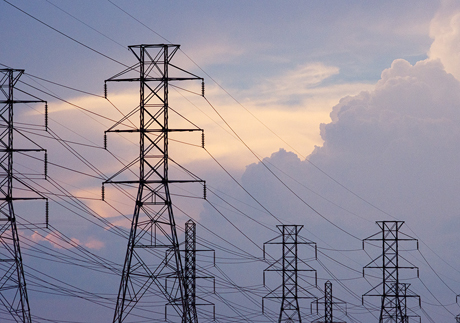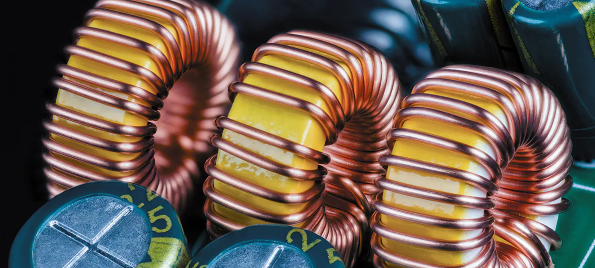noticias
Designing an Efficient Industrial AC-DC Converter
Autor: Módulo de potencia ZYG Time: 2023-5-9
In modern industrial applications, AC-DC converters play a significant role in transforming electrical power between different voltage levels and frequencies. These converters are essential for powering a wide range of devices, from small electronic circuits to heavy machinery. With the increasing demand for more efficient and reliable power supplies, it is essential to design AC-DC converters that can meet the requirements of industrial applications.
The efficiency of an AC-DC converter is a critical factor that determines its performance. Higher efficiency means that less power is dissipated as heat, resulting in lower operating temperatures and longer device lifetimes. To achieve high efficiency, designers must consider several factors, including power factor correction, switching frequency, and topology.
Power factor correction (PFC) is a technique used to improve the efficiency of AC-DC converters. It involves controlling the input current to the converter to match the voltage waveform, reducing the harmonic distortion and improving the power factor. PFC can significantly improve the efficiency of AC-DC converters, reducing power losses and increasing the power factor.
Choosing the right switching frequency is also critical to achieving high efficiency. A higher switching frequency allows for smaller and lighter components, reducing the overall size and weight of the converter. However, a higher switching frequency also increases switching losses, reducing efficiency. Designers must find the optimal switching frequency that balances size and efficiency.

Topology is another factor that affects the efficiency of AC-DC converters. There are several topologies available, including flyback, forward, and push-pull. Each topology has its advantages and disadvantages, and designers must choose the best topology based on the application’s requirements. For example, the flyback topology is commonly used in low-power applications, while the forward topology is suitable for high-power applications.
In addition to these factors, designers must also consider other design aspects, such as component selection, control circuitry, and thermal management. Choosing the right components, such as high-quality capacitors and inductors, can significantly improve the converter’s efficiency. Control circuitry, such as pulse-width modulation (PWM) circuits, can help regulate the output voltage and improve efficiency. Thermal management is also essential, as it can help dissipate heat and prevent overheating.
In conclusion, designing an efficient industrial AC-DC converter requires careful consideration of several factors, including power factor correction, switching frequency, and topology. By optimizing these factors and considering other design aspects, designers can create high-performance and reliable AC-DC converters that meet the demands of modern industrial applications.
Anterior: Designing an AC-DC Converter Circuit: A Step-by-Step Guide
Próximo: AC-DC Converter Module: Efficient and Reliable Power Conversion Solution
informacion relevante
-
2023-4-24
AC-DC Power Supply: The Ultimate Guide to Understanding and Choosing the Right One
An AC-DC power supply is an essential tool for powering electronic devices. It converts alternating current (AC) to direct current (DC), providing a stable and regulated voltage output. Understanding the basics of an AC-DC power supply and how to choose the right one for your needs is crucial for anyone working with electronic devices. In this guide, we will cover everything you need to know about AC-DC power supplies. AC-DC Power Supply Basics An AC-DC power supply consists of several components that work together to convert AC to DC. The main components are the transformer, rectifier, filter, and regulator. The transformer is used to step down the AC voltage from the mains to a lower voltage suitable for the rest...
Ver detalles -
2023-5-21
Transforming Power: The Advantages of an AC-DC Power Supply
In today's world, power supplies are essential components of practically every electronic device. They serve as the foundation of the electrical systems that power everything from computers and smartphones to industrial machinery and healthcare equipment. One of the most popular types of power supplies is the AC-DC power supply. An AC-DC power supply is a type of power supply that converts AC (alternating current) voltage from a wall outlet or other source into DC (direct current) voltage that can be used to power electronic devices. There are several advantages to using an AC-DC power supply, which we'll explore in this article. 1. Efficiency One of the major advantages of an AC-DC power supply is its high efficiency. AC-DC power supplies...
Ver detalles -
2024-11-6
DC Power Module: Stable Power Supply, Driving Future Technology
In the rapidly developing field of electronic technology, DC power modules, as the heart of electronic equipment, play an important role. They not only provide stable and reliable DC power to various devices, but also promote the progress and development of modern technology. This article will introduce the working principle, types, applications, and selection points of DC power modules in detail to help you better understand and select this key component. Operating Principle: Precise Conversion, Stable Output The core function of the DC power module is to convert alternating current (AC) into direct current (DC), while achieving precise regulation of voltage and current. This process usually involves rectification, filtering, voltage regulation and other links to ensure that the output DC...
Ver detalles -
2023-6-3
Bidirectional DC-DC Converter: A Two-Way Power Conversion Solution
The bidirectional DC-DC converter is a device that enables the conversion of power in two directions. It can convert the power from a source to a load, and then back from the load to the source. This device is used in various applications, including renewable energy systems, electric vehicles, and grid-tied energy storage systems. The bidirectional DC-DC converter is a critical component in renewable energy systems. Photovoltaic (PV) systems generate power from solar panels, which can be used to power loads or stored in batteries. During the day, PV panels generate a surplus of energy that can be stored in batteries. At night, when the PV panels are not generating power, the batteries can be used to power loads. The...
Ver detalles -
2023-8-3
High quality 24V AC to DC Converter: Efficient Power Conversion for Your Electronics
In today's increasingly digital world, electronics play a vital role in our daily lives. From smartphones and laptops to home appliances and automation systems, these devices require a stable and efficient power supply to function properly. This is where a 24V AC to DC converter comes into play, providing a reliable power conversion solution for various electronic applications. First and foremost, it is essential to understand the difference between AC (alternating current) and DC (direct current) power. AC power is the type of electricity supplied by the power grid, where the direction of current periodically changes. On the other hand, DC power flows in a constant direction, making it ideal for powering electronic devices. However, since most power sources, such...
Ver detalles -
2023-5-21
Unleashing the Power: The Ultimate AC-DC Power Supply Solution
In today's world, technology reigns supreme. From smartphones to laptops, and everything in between, we rely on these devices to make our lives easier and more efficient. However, none of these devices would work without a reliable power supply. That's where AC-DC power supplies come in. AC-DC power supplies are used to convert alternating current (AC) into direct current (DC) to power a wide range of electronic devices. Whether you're charging your phone or powering a server, AC-DC power supplies provide the necessary energy to keep your devices running smoothly. So, what makes a good AC-DC power supply? First and foremost, it needs to be reliable. A power supply that fails can lead to costly repairs or even data loss....
Ver detalles


















